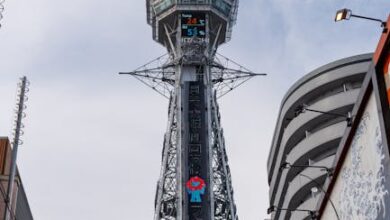The DeFAI Dream: Automation Unleashed

How do we build trust in a world increasingly powered by automation? It’s a question that echoes through every corner of our digital lives, from the algorithms curating our news feeds to the smart contracts managing our finances. And as the latest HackerNoon Newsletter from November 14, 2025, so aptly highlights, this question reaches a fever pitch at the intersection of Decentralized Finance (DeFi) and Artificial Intelligence (AI) — a nascent, yet explosively growing domain we’ve come to call DeFAI. The article, “The DeFAI Crucible: Navigating Trust and Automation in a Nascent Market,” really hit home for me. It’s a deep dive into the paradox of our era: we crave the efficiency and innovation that AI and decentralization promise, but the path is littered with vulnerabilities and a staggering trust deficit.
I remember when DeFi first burst onto the scene, brimming with the promise of a trustless financial system, free from intermediaries. Then came AI, offering unparalleled automation and predictive power. Combine the two, and you have DeFAI — a vision of hyper-efficient, self-governing financial ecosystems. Sounds utopian, doesn’t it? Yet, as we collectively watch $59 billion vanish from DeFi due to breaches and hacks, it becomes painfully clear that “trustlessness” is a far more complex ideal than we first imagined. The crucible, indeed, is hot.
The DeFAI Dream: Automation Unleashed
Let’s paint a picture of what DeFAI aims to be. Imagine financial protocols that don’t just execute transactions based on predefined rules, but actively learn, adapt, and optimize themselves using AI. We’re talking about AI-driven lending platforms that dynamically adjust interest rates based on real-time market sentiment and individual risk profiles, or decentralized exchanges that use machine learning to predict liquidity needs and execute trades with unprecedented efficiency. This isn’t just about faster transactions; it’s about creating an intelligent, responsive, and ultimately more accessible financial system.
Where DeFi’s Transparency Meets AI’s Brainpower
At its core, DeFi is about transparency and immutability. Every transaction is recorded on a blockchain, visible to all, and secured by cryptographic proofs. Adding AI into this mix should, in theory, enhance these attributes. AI could be used to audit smart contract code for vulnerabilities, monitor network activity for anomalies, and even manage complex portfolios more effectively than any human. It could personalize financial services on a massive scale, bringing sophisticated tools to anyone with an internet connection, bypassing traditional gatekeepers.
The allure is undeniable. Automation reduces human error, speeds up processes, and lowers costs. Trustlessness, ideally, means you don’t have to put blind faith in a central authority; you trust the code and the network. When AI and DeFi merge, the vision is one of an autonomous financial organism, constantly evolving, perpetually optimizing, and inherently fair. It’s a powerful narrative that drives billions in investment and attracts some of the brightest minds in tech. But like all powerful narratives, it often glosses over the fine print, the messy details that reside in the “crucible” itself.
The Crucible’s Fire: Forging Trust in a Wild Frontier
Despite the grand vision, the reality of DeFAI today is a landscape fraught with significant challenges, especially concerning security and trust. The very technologies designed to enhance security and remove the need for trust have become the vectors for some of the largest financial losses in recent history. The $59 billion figure isn’t just a number; it represents shattered trust, lost savings, and a stark reminder that innovation without robust security is a house of cards.
The Shadow of Cybersecurity: Why Billions Vanish
The vulnerabilities in DeFAI are multi-faceted. Smart contract code, while open-source, can contain subtle bugs or logic flaws that malicious actors exploit. Oracle manipulation, where external data feeds are compromised to trigger incorrect outcomes on-chain, is another common vector. Then there are flash loan attacks, governance attacks, and even sophisticated phishing schemes. It’s a relentless game of cat and mouse, where attackers are constantly finding new ways to exploit the nascent technology.
What makes it even more complex is the role of AI itself. While AI is a powerful tool for defense – spotting anomalies, predicting attacks, and strengthening encryption – it also arms attackers with more sophisticated tools. AI can automate exploit discovery, craft highly convincing social engineering attacks, and even orchestrate complex, multi-stage hacks that are incredibly difficult to detect in real-time. This dual nature of AI means that security in the DeFAI space isn’t just about protecting against human hackers; it’s about defending against increasingly intelligent, autonomous threats.
Navigating the Trust Deficit: Beyond the Hacks
Beyond the direct financial losses from hacks, there’s a broader trust deficit in DeFAI. The promise of “trustlessness” often translates into a lack of recourse when things go wrong. In traditional finance, there are regulatory bodies, insurance, and legal frameworks to fall back on. In DeFAI, if your funds are lost due to a smart contract vulnerability, there’s often no one to turn to, no central authority to appeal to. This makes the concept of implicit trust in the code and the community all the more critical, and all the more fragile when that trust is broken.
Regulatory uncertainty also plays a huge role. Governments around the world are still grappling with how to classify and regulate cryptocurrencies and decentralized applications. This creates a volatile environment where rules can change quickly, impacting investor confidence and operational stability. For DeFAI to truly flourish and become a mainstream financial pillar, it needs a stable, predictable, and fair regulatory landscape, one that protects users without stifling the very innovation that makes the space so exciting.
Building Resilience: Charting a Course Through the DeFAI Wilderness
So, how do we move forward? The DeFAI crucible isn’t meant to destroy, but to refine. It’s a challenging proving ground where robust solutions and true innovation will ultimately emerge. For this nascent market to mature, we need a concerted effort on several fronts.
Prioritizing Robust Security Protocols
This is non-negotiable. Rigorous smart contract auditing by multiple independent firms, ongoing bug bounty programs, and formal verification methods must become standard practice. Projects need to invest heavily in security from day one, not as an afterthought. Furthermore, leveraging AI for security analysis – for dynamic threat detection, predictive vulnerability assessments, and automated incident response – is crucial. It’s about fighting fire with fire, using advanced AI to counter AI-powered threats.
Cultivating Transparency and Education
True decentralization thrives on transparency. Open-source development with clear, understandable documentation is vital. Beyond the code, projects need to be transparent about their governance structures, risk factors, and recovery plans. Equally important is user education. Empowering individuals with the knowledge to understand the risks, practice good cyber hygiene, and identify scams is key to fostering a more resilient ecosystem. We can’t expect everyone to be a blockchain expert, but clear, accessible information can go a long way.
Adaptive Regulatory Frameworks and Community Standards
The regulatory landscape needs to evolve in tandem with the technology. Regulators, technologists, and legal experts must collaborate to create frameworks that provide clarity and protection without stifling innovation. This means understanding the unique aspects of decentralization and AI, rather than trying to fit them into old paradigms. Simultaneously, the DeFAI community itself needs to establish and uphold stronger ethical standards and best practices, promoting accountability and fostering a culture of collective responsibility. It’s a collective endeavor, requiring input from all stakeholders.
The Path Forward: From Crucible to Cornerstone
The DeFAI crucible is, without a doubt, one of the most exciting and challenging frontiers in modern finance. The vision of an autonomous, intelligent, and fair financial system powered by the combined might of DeFi and AI is compelling enough to drive relentless innovation. Yet, the very real threats of cybersecurity breaches and the ongoing struggle to build genuine trust underscore the fact that this is not a journey for the faint of heart. The $59 billion lost is a harsh lesson, a stark reminder of the immense stakes involved. But every challenge presents an opportunity. It forces us to confront flaws, rethink assumptions, and build stronger, more resilient systems. As we navigate this complex terrain, the question isn’t whether DeFAI will transform finance, but whether we, as a collective, can forge the necessary trust and security to make it a cornerstone, rather than just a fleeting experiment, in the future of our financial world.





